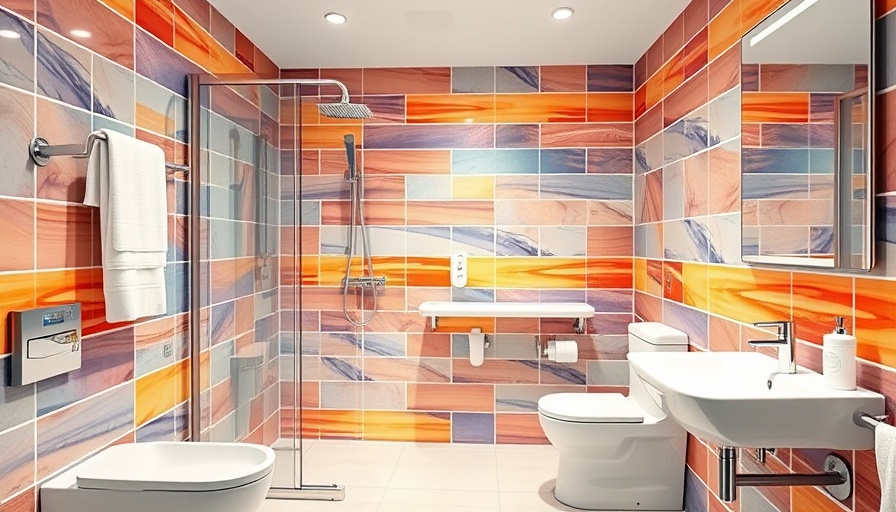
Understanding the Importance of Bathtub Safety for Ocean County Residents
Ensuring bathtub safety is paramount for residents of Ocean County, where the allure of a tranquil bath can sometimes mask hidden dangers. Slips, falls, and accidents in the bathroom occur rapidly, often leading to severe injuries, particularly affecting vulnerable populations such as young children and the elderly. Moreover, with many homes in Ocean County reflecting beautiful architectural styles, it becomes crucial not only to maintain aesthetic appeal but also to prioritize safety. Establishing a secure bathing environment can significantly enhance the overall value and comfort of your home.
Five Simple Tips for Enhancing Bathtub Safety
As a proactive approach, here are five simple yet impactful tips to ensure bathtub safety for all residents:
Tip 1: Install Non-Slip Mats or Strips
Installing non-slip mats or strips inside and outside of the bathtub is one of the simplest yet most effective enhancements for bathroom safety. These mats offer vital grip, helping to prevent falls when moving in and out of the tub. Non-slip mats should be made of durable, water-resistant materials to avoid mold accumulation, and mats with suction cups provide added security. Regular cleaning of these mats is essential to maintain their effectiveness and hygiene, ensuring that debris does not reduce their grip over time. Additionally, placing a non-slip bath mat outside the tub helps provide a secure transition to dry surfaces.
Tip 2: Strategically Place Grab Bars
Grab bars are integral to enhancing bathtub safety, particularly for individuals with mobility challenges. These bars provide a stable grip while entering or exiting the bathtub and can significantly reduce the risk of accidents. It’s crucial to evaluate the installation points; for maximum support, grab bars must be secured to wall studs. Consider positioning grab bars in areas like behind the faucet or opposite the tub, enhancing accessibility without compromising the aesthetic layout of the bathroom. For added convenience, installing an adjustable handheld showerhead allows for easier rinsing and minimizes the need for extreme body movements.
Tip 3: Optimize Water Temperature Control
Controlling water temperature is vital in preventing burns or scalding incidents. Residents are advised to set their water heaters to no higher than 120 degrees Fahrenheit, a temperature that still provides comfort while significantly reducing the risk of burns. Installing anti-scald devices can further safeguard vulnerable users by providing automatic temperature control, ensuring a safe bathing experience for young children and the elderly alike.
Tip 4: Keep Bathing Essentials Within Reach
It's essential to keep all bathing essentials—shampoo, soap, towels—within easy reach to minimize the chances of losing balance while reaching for items. A shower caddy or wall-mounted shelving can hold necessary items securely within arm's reach, thus reducing unnecessary movements that could lead to falls. For additional safety, consider using easy-to-open containers for medications, lotions, or any necessary health products used in the tub.
Tip 5: Educate Family Members on Safety Protocols
Lastly, cultivating an environment centered around safety involves educating all family members on best practices for bathtub use. It’s important to instill awareness about the risks and promote any safety features installed in the bathroom. Conduct regular safety discussions, especially involving young children and elderly family members, ensuring that everyone understands how to use grab bars, non-slip mats, and other features effectively. This awareness is a key component in preventing accidents before they can happen.
Conclusion: Taking Action for a Safer Bathing Experience
Enhancing bathtub safety is a crucial consideration for Ocean County residents who wish to protect their loved ones while enjoying the comfort of their homes. By implementing these simple tips—installing non-slip surfaces, strategically placing grab bars, optimizing temperature control, organizing bathing essentials, and educating family members—you can create a safe bathing environment conducive to relaxation and enjoyment. Don’t hesitate to take these proactive steps, and embrace the comfort and safety of your bathing experience!
 Add Row
Add Row  Add
Add 




Write A Comment